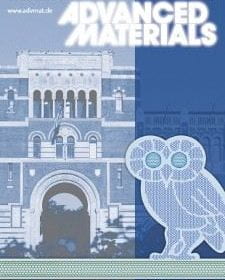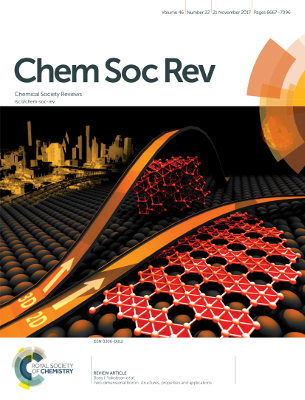Summary
Prof. Yakobson’s research interests are in the theory and modeling of structure, kinetics, and properties of materials derived from macroscopic and fundamental molecular interactions. He has done ground-breaking work on the physical properties of nanotubes, in particular their electro-mechanics, and recently with graphene and graphane.
Material systems
- Carbon Nanotubes
- Graphene & derivatives
- Boron
- Two-dimensional nanomaterials beyond graphene
- …

Methods
- Density functional theory
- Molecular dynamics
- Physical kinetics
- Nanomechanics
- …
Topical Reviews
- Two-Dimensional Transition Metal Dichalcogenides: A Theory and Simulation Perspective
S. Gupta, J.-J. Zhang, J. Lei, H. Yu, M. Liu, X. Zou, and B. I. Yakobson, Chem. Rev. 125, 786–834 (2025)
Two-dimensional transition metal dichalcogenides (2D TMDs) are a promising class of functional materials for fundamental physics explorations and applications in next-generation electronics, catalysis, quantum technologies, and energy-related fields. This review focuses on how theory and simulations have contributed to recent progress in 2D TMDs research, particularly in understanding properties of twisted moiré-based TMDs, predicting exotic quantum phases in TMD monolayers and heterostructures, understanding nucleation and growth processes in TMD synthesis, and comprehending electron transport and characteristics of different contacts in potential devices based on TMD heterostructures. The notable achievements provided by theory and simulations are highlighted, along with the challenges that need to be addressed.
- Theoretical Prediction of Two-Dimensional Materials, Behavior, and Properties
E. S. Penev, N. Marzari, and B. I. Yakobson, ACS Nano 15, 5959–5976 (2021)

Predictive modeling of two-dimensional (2D) materials is at the crossroad of two current rapidly growing interests: 2D materials per se, massively sought after and explored in experimental laboratories, and materials theoretical-computational models in general, flourishing on a fertile mix of condensed-matter physics and chemistry with advancing computational technology. Here the general methods and specific techniques of modeling are briefly overviewed, along with a somewhat philosophical assessment of what “prediction” is, followed by selected practical examples for 2D materials, from structures and properties, to device functionalities and synthetic routes for their making. We conclude with a brief sketch–outlook of future developments.
- Mechanical Properties of Carbon Nanotubes
B. I. Yakobson and P. Avouris, Topics Appl. Phys. 80, 287–327 (2001)
This paper presents an overview of the mechanical properties of carbon nanotubes, starting from the linear elastic parameters, nonlinear elastic instabilities and buckling, and the inelastic relaxation, yield strength and fracture mechanisms. A summary of experimental findings is followed by more detailed discussion of theoretical and computational models for the entire range of the deformation amplitudes. Non-covalent forces (supra-molecular interactions) between the nanotubes and with the substrates are also discussed, due to their significance in potential applications.
- Unfolding the Fullerene: Nanotubes, Graphene and Poly-Elemental Varieties by Simulations
E. S. Penev, V. I. Artyukhov, F. Ding, and B. I. Yakobson, Adv. Mater. 24, 4956–4976 (2012)
Here we review the theoretical and computational models development in our group at Rice University, towards understanding the key structures and behaviors in the immense diversity of carbon allotropes. Our particular emphasis is on the role of certain transcending concepts (like elastic instabilities, dislocations, edges, etc.) which serve so well across the scales and for chemically various compositions
- An Open Canvas—2D Materials with Defects, Disorder, and Functionality
X. Zou and B. I. Yakobson, Acc. Chem. Res. 48, 73–80 (2015)
In this Account, we review our progress in understanding of various defects. We begin by expressing the energy of an arbitrary graphene edge analytically, so that the environment is regarded by “chemical phase shift”. This has profound implications for graphene and carbon nanotube growth. Generalization of this equation to heteroelemental BN gives a method to determine the energy for arbitrary edges of BN, depending on the partial chemical potentials. This facilitates the tuning of the morphology and electronic and magnetic properties of pure BN or hybrid BN|C systems. Applying a similar method to three-atomic-layer TMDCs reveals more diverse edge structures for thermodynamically stable flakes. Moreover, CVD samples show new types of edge reconstruction, providing insight into the nonequilibrium growth process
- Two-dimensional boron: structures, properties and applications
Z. Zhang, E. S. Penev, and B. I. Yakobson, Chem. Soc. Rev. 46, 6746–6763 (2017)

Here, we review the current theoretical and experimental progress in realizing boron atomic layers. Starting by describing a decade-long effort towards understanding the size-dependent structures of boron clusters, we present how theory plays a role in extrapolating boron clusters into 2D form, from a freestanding state to that on substrates, as well as in exploring practical routes for their synthesis that recently culminated in experimental realization. While 2D boron has been revealed to have unusual mechanical, electronic and chemical properties, materializing its potential in practical applications remains largely impeded by lack of routes towards transfer from substrates and controlled synthesis of quality samples
- Mechanisms and theoretical simulations of the catalytic growth of nanocarbons
E. S. Penev, F. Ding, and B. I. Yakobson, MRS Bull. 42, 794–801 (2017)
This article discusses how experimental discoveries and theoretical approaches evolved hand-in-hand for the successful understanding of challenging issues, highlighting parallels and distinctions between graphene and CNTs. Key aspects include the mechanisms of nucleation and CNT-liftoff, chiral symmetry selection and control, rates of growth and island shapes, mechanisms defining single chirality of the nanotubes, and ways to suppress grain boundaries in the quest for ever larger and faster growing single-crystal graphene, or longest defect-free CNTs. The theme of catalyst chemistry and structure, either as a nanoparticle or a planar substrate, is traced through the stages of nanocarbon formation, with focus on theoretically generalizable findings.
Group meetings
- Fridays, 2:00pm, Rm 301A (Space Science and Technology Bldg.)
Made possible by…
- U.S. Department of Energy
- Air Force Office of Scientific Research
- Office of Naval Research
- U.S. Army Research Laboratory
- Defense Advanced Research Projects Agency
- National Science Foundation
- National Aeronautics and Space Administration
- The Welch Foundation
- Honda Research Institute USA
- Lockheed Martin
- Samsung Semiconductor


